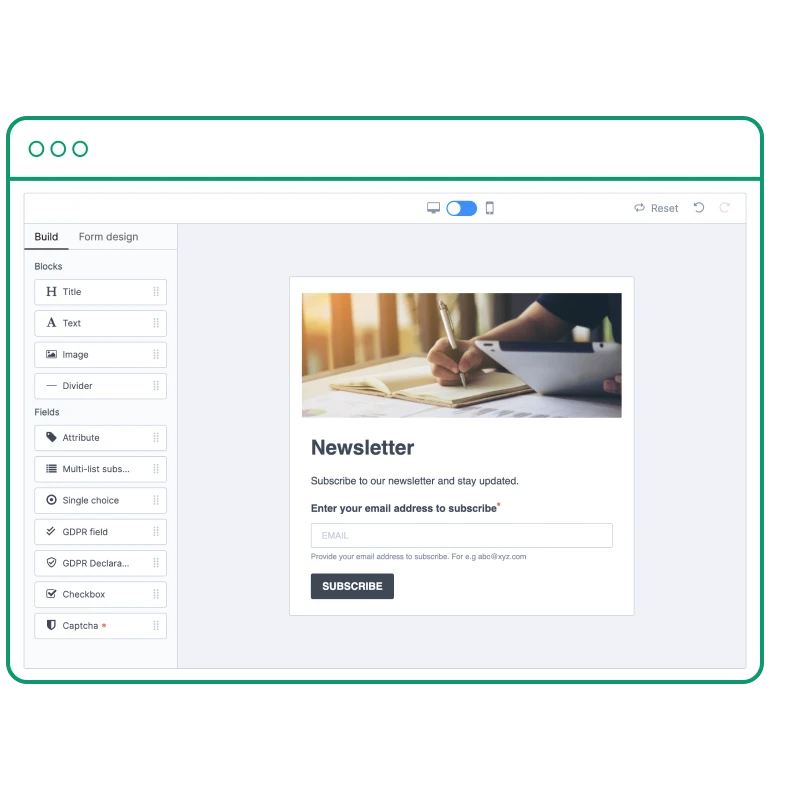Crie com "arrastar e soltar"
Adapte o formulário de inscrição
de acordo com sua marca.
Personalize campos
Escolha os campos para coletar
as informações de seus contatos.
Atraia inscritos
Adicione o formulário ao seu site,
compartilhe-o em todos seus canais.
Crie a sua conta gratuita
Crie formulários de inscrição em minutos, sem cartão de crédito.Descubra outros produtos
Sales Platform
Principais funcionalidades
- Gerenciamento de pipeline
- Rastreamento automatizado de oportunidades
- Meetings e gravações de chamadas
Conversations Platform
Principais funcionalidades
- Chat
- Phone
- Inbox universal
Messaging API
Principais funcionalidades
- API de e-mail, SMS e WhatsApp
- Integração CMS
- Inbound parsing
